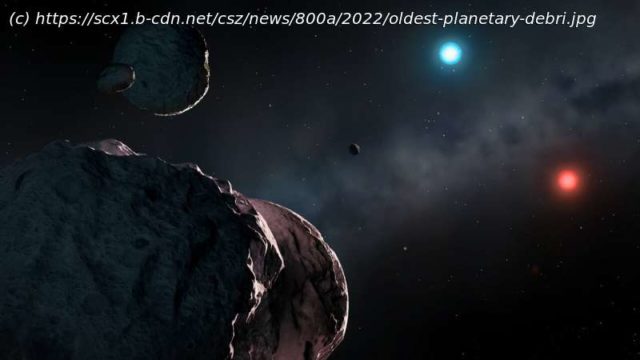Astronomers led by the University of Warwick have identified the oldest star in our galaxy that is accreting debris from orbiting planetesimals, making it one of the oldest rocky and icy planetary systems discovered in the Milky Way.
Astronomers led by the University of Warwick have identified the oldest star in our galaxy that is accreting debris from orbiting planetesimals, making it one of the oldest rocky and icy planetary systems discovered in the Milky Way.
Their findings are published today (Nov. 5) in the Monthly Notices of the Royal Astronomical Society and conclude that a faint white dwarf located 90 light years from Earth, as well as the remains of its orbiting planetary system, are over 10 billion years old.
The fate of most stars, including those like our sun, is to become a white dwarf. A white dwarf is a star that has burnt up all of its fuel and shed its outer layers and is now undergoing a process of shrinking and cooling. During this process, any orbiting planets will be disrupted and in some cases destroyed, with their debris left to accrete onto the surface of the white dwarf.
For this study the team of astronomers, led by the University of Warwick, modeled two unusual white dwarfs that were detected by the space observatory GAIA of the European Space Agency. Both stars are polluted by planetary debris, with one of them being found to be unusually blue, while the other is the faintest and reddest found to date in the local galactic neighborhood—the team subjected both to further analysis.
Using spectroscopic and photometric data from GAIA, the Dark Energy Survey and the X-Shooter instrument at the European Southern Observatory to work out how long it has been cooling for, the astronomers found that the “red” star WDJ2147-4035 is around 10.7 billion years old, of which 10.






